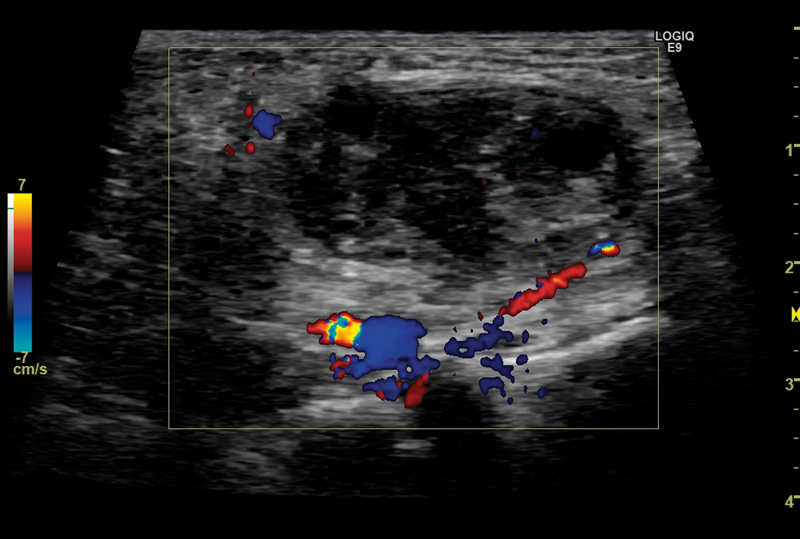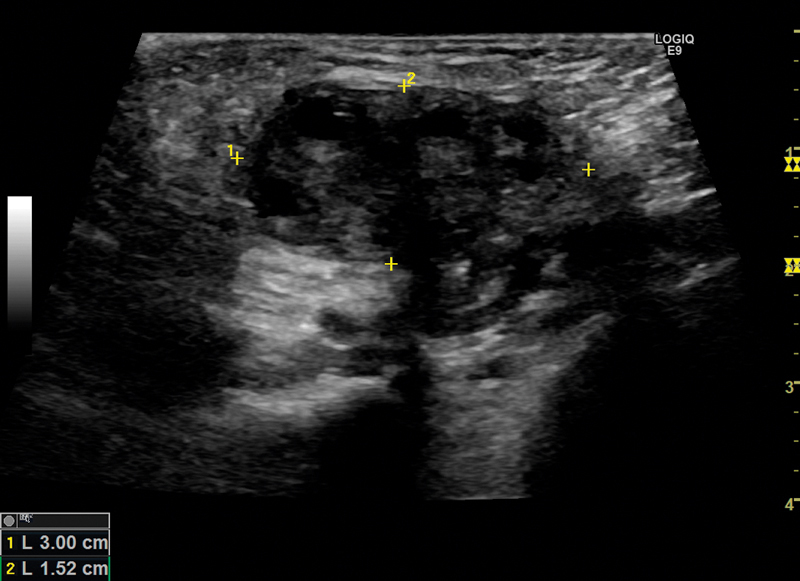An Atypical Inguinal Hernia in a 9-Month-Old Girl - Case Report and Ultrasound Findings.
IF 1.6
Q3 RADIOLOGY, NUCLEAR MEDICINE & MEDICAL IMAGING
引用次数: 1
Abstract
The incidence of pediatric inguinal hernias has been cited in other studies to be between 0.8 % and 4.4 %, and the male to female ratio in a clinical series containing 6361 pediatric ingiunal hernias in infants and children under the age of 18 was 5:1. In female infants, inguinal hernias contained an ovary in 15 % of cases. The presence of a irreducible ovary increases the risk of hernial strangulation, with strangulation rate estimates of 2 % to 33 % (S. Ein, et.al., Journal of Pediatric Surgery, 41.5; 2006;, 980–86.), presenting a risk of necrosis of the ovary. Differential diagnoses in female infants are numerous and include hydrocele of the canal of Nuck, femoral hernia, epidermal inclusion cysts, cystic lymphangiomas, lymphadenopathy, lymphadenitis, rhabdomyosarcoma, and metastatic tumor (K. Hennelly et.al., The Journal of Emergency Medicine, 40.1; 2011;, 33–36). This suggests the importance of rapid and precise diagnosis, with ultrasound (US) possibly being a helpful noninvasive preoperative diagnostic tool for non-reducible inguinal masses. In this case report, we present a female infant with an inguinal hernia containing a torqued and strangulated ovary diagnosed by US.


1例9月大女婴非典型腹股沟疝病例报告及超声检查。
本文章由计算机程序翻译,如有差异,请以英文原文为准。
求助全文
约1分钟内获得全文
求助全文
来源期刊

Ultrasound International Open
RADIOLOGY, NUCLEAR MEDICINE & MEDICAL IMAGING-
CiteScore
3.00
自引率
0.00%
发文量
7
审稿时长
12 weeks
 求助内容:
求助内容: 应助结果提醒方式:
应助结果提醒方式:


